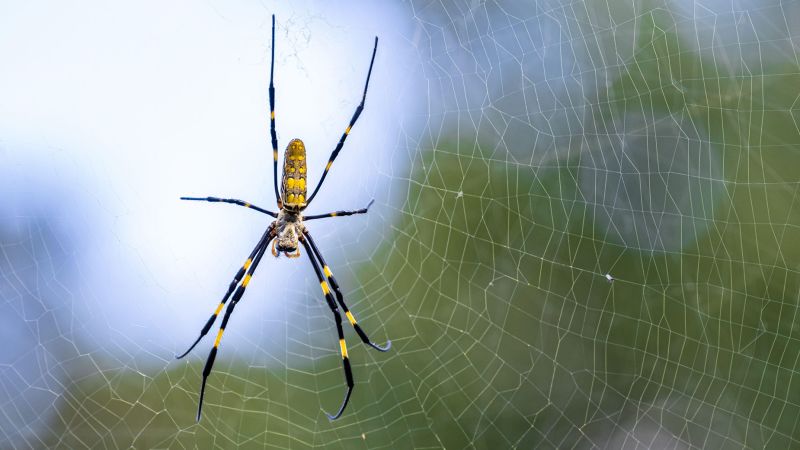As the Jorō spider continues to spread across the southeastern United States, its spindly homes can be spotted almost anywhere — even on power lines and stoplights hovering over busy roads.
Typical spiders — and most creatures — tend to find the noise and wind disturbance from nearby busy roads to be too stressful, but the Jorō spider doesn’t seem to mind much, according to a new study published in Arthropoda on February 13. This research could explain why the spiders are regularly spotted in urban areas that native spiders don’t inhabit and suggests the creatures are well-suited to thrive and spread in similar locations throughout the United States.
“If you ever look at a spiderweb next to a road, they’re jiggling and shaking, and it’s a cacophony of stimuli. … Roadsides are a really harsh place for an animal to live. But Jorōs seem to be able to live next to them,” said lead study author Andy Davis, a research scientist at the University of Georgia’s Odum School of Ecology.
If you ever look at a spiderweb next to a road, they’re jiggling and shaking, and it’s a cacophony of stimuli. … But Jorōs seem to be able to live next to them.
Oh great—Chaos Spiders.
Yep. Like when you randomly walk into one or two of those webs face first at night. Sticky creepy chaos (boop!)
GET. OUT.
This isn’t unusual for over 20 years I’ve been seeing big ole chunky spiders that are resistant to being blasted WITH THE JET SETTING FROM THE HOSE DIRECTLY. lol. steel webs. I welcome the superspiders, some people in this thread (not you) are clearly WEAK
Lmao this article was written by spiders
deleted by creator
Good thing this ain’t human.

so then, do they get along with other spiders as well? maybe we can finally farm some spider silk without the genetic splicing?
I’ve seen a lot of Joro webs that are interlocking, with 3+ spiders living in web complexes. It’s quite unpleasant to run into face-first, but interesting to see. It doesn’t answer your question, but they seem more tolerant of each other than most other spider species.
I think that we’re likely better off trying to synthesize spider silk than cultivate it though.
Fuck these things. Even if they aren’t bad for the environment, they absolutely wreck your yard. In the summer, each week, I’ll go around my yard and clean out 15-16 massive webs. Some of them 40 feet up. Most of them face level. The webs are strong so they easily get filled with leaves. Your yard ends up looking like a fucking haunted house with webs everywhere and leaves floating in the sky. Not to mention the females are HUGE - 6 inches across the legs sometimes. Total nightmares.
Removed by mod
Does that mean we accidentally domesticated these little guys? Because I don’t know if that’s cute, funny, or terrifying.
They’re very close to what people call garden spiders or corn spiders that are all over the US.
They’re big and creepy, but they’re harmless.If you pick one up and handle it enough that it gets pissed off and bites you, it’ll be equivalent to a bee sting.
If you don’t pick it up and piss it off there’s 0% chance of you getting bit by one.
Better call in the EDF.
I haven’t seen one of these in ages. Maybe they are more acclimated to the Florida region like the rest of I vssive things.








